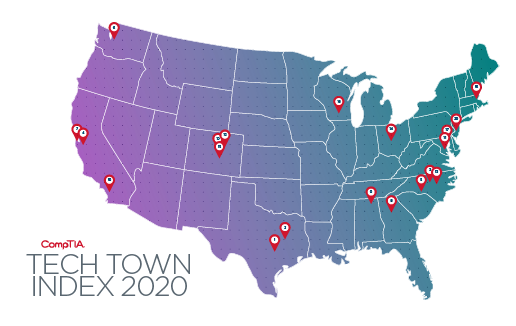Local government tech departments have performed the difficult task of successfully deploying tools to allow employees to work remotely during the ongoing pandemic. As many cities and counties continue to operate in virtual-first environments with employees working from home, some governments are adopting a hybrid environment where limited staff are allowed access to government facilities or there is a rotating schedule of days spent in the office.
Technology leaders across the country are sharing the success stories of their employees who moved successfully to a remote work environment; in many cases citing how employees have flourished in this new work setting. Some say productivity is up, and projects that in the past might have taken months are now completed in weeks.
While we are seeing some of the benefits, there are challenges as well, both for the for the employee and for the organization.
CompTIA's Public Technology Institute (PTI) recently held a discussion with several member local government technology leaders who shared their insight and lessons learned for other executives to consider when it comes to managing a remote workforce:
IT leaders need to be nimble and able to adapt to a work environment that may change from week to week. Managing a remote workforce requires a different set of skills, and the ability to build and show trust with individual employees is paramount.
It is important that as a leader you stay connected with your team and pay attention to how your employees are doing. Hold video meetings with your team, encourage your team to connect with each other and with colleagues in other departments on a regular basis. While many employees may thrive in a remote environment, be aware of those who miss the in-person interaction with colleagues or supervisors that an office environment provides.
Setting work schedule expectations is critical. Is it ok for an employee to work in the evening while other staff are following a more typical work schedule and therefore offline at that time?
Remind your team that it is important to step away, that your organization values work-life balance, and ensure you lead by example. It is far too easy for employees to feel compelled to stay glued to their computers, which can lead to employee burn out.
Not everything has to be done via Zoom or WebEx and not everything has to be on camera. While videoconferencing is a key tool for collaboration, leaders should identify other platforms that allow employees to connect with each other.
Measure productivity on fact, as opposed to feeling and opinion. Just as if we were operating in a more typical, non-remote work environment, it is important when measuring employee productivity to be objective rather than subjective.
It is clear that remote work – whether with a fully remote workforce or a hybrid approach – has gained traction in many local government IT organizations. IT leaders who have been successful in guiding their department practices can also serve as advocates for expanding “smart” remote work practices throughout all areas of government.
We recognize that this list will be expanded upon and welcome insight on what has worked in your organization: Please send to [email protected].

 Add CompTIA to your favorite RSS reader
Add CompTIA to your favorite RSS reader

